Customer sentiment analysis—also known as customer opinion mining—uses AI-powered tools to analyze text and audio and uncover how customers feel about an interaction with your brand.
With advanced natural language processing (NLP), these tools can actually detect human emotion and you score it as positive, neutral, or negative. By measuring sentiment across touchpoints, businesses can better understand customer expectations, experiences, and perceptions, and then use those insights to boost satisfaction, loyalty, and retention.
Here is everything you need to know about what it is and, most importantly, how to measure it.
What Is Customer Sentiment Analysis?
Customer sentiment analysis is the process of using artificial intelligence to determine how customers feel about a brand, product, or experience. By analyzing written or spoken feedback from sources like reviews, surveys, customer support tickets, and social media, sentiment analysis tools can classify opinions about a customer’s experience as good or bad.
The analysis uses advanced technologies such as artificial intelligence (AI), machine learning, natural language processing (NLP), and natural language understanding (NLU) to process large volumes of textual data and extract insights about customer sentiment.
These insights typically categorize sentiment as positive, negative, or neutral, but more sophisticated methods can identify specific emotions, urgency, and sentiment related to particular aspects or features of a product or service (aspect based sentiment analysis).
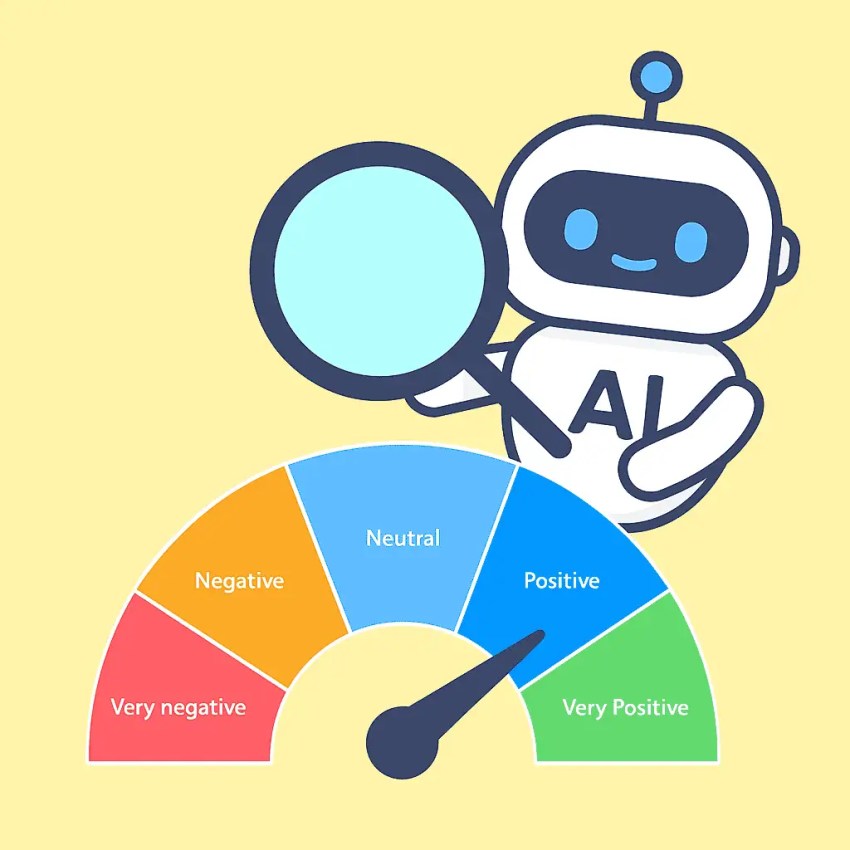
Basically, customer sentiment analysis can transform subjective customer feedback into actionable data. This helps businesses gain a clearer understanding of customer attitudes, uncover pain points, and make data-driven decisions to improve satisfaction, loyalty, and overall customer experience.
Why Sentiment Analysis Matters in Customer Experience (CX)
Studies show that 73% of customers expect brands to understand their unique needs, and companies using sentiment analysis are 2.4 times more likely to exceed customer satisfaction goals.
There are several different sentiment analysis use cases, each of which can provide crucial insights that can contribute to business and revenue growth when leveraged correctly.
Understanding customer emotions
Customer sentiment analysis helps you understand how customers feel about your brand, products, or services, providing insight into customer satisfaction and any areas for improvement. As a result, this can be a critical part of your customer sentiment analytics initiatives.
For example, Glammmup increased their Customer Satisfaction Score (CSAT) from 68 to 82 within a year by analyzing customer sentiment from support conversations.
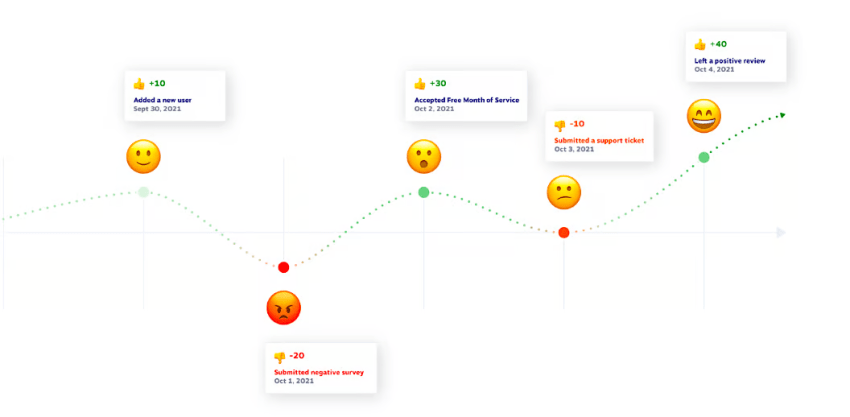
Improving customer experience
By analyzing sentiment, companies can identify pain points and improve the overall experience, leading to increased customer loyalty and retention.
For instance, a major restaurant chain used sentiment analysis to detect rising demand for plant-based options, leading to successful new menu launches
This should be part of how you measure your customer experience. As one of the most crucial parts of your sentiment analysis work, this allows you to determine how to better optimize touch points throughout the entire customer journey.
If your customers are complaining about slow support ticket responses, for example, you can look at your support team’s bandwidth. You may find a large number of basic inquiries are slowing your agents down, and you can relieve some pressure on your team by offering live support with AI-powered chatbots that act as the first line of defense.
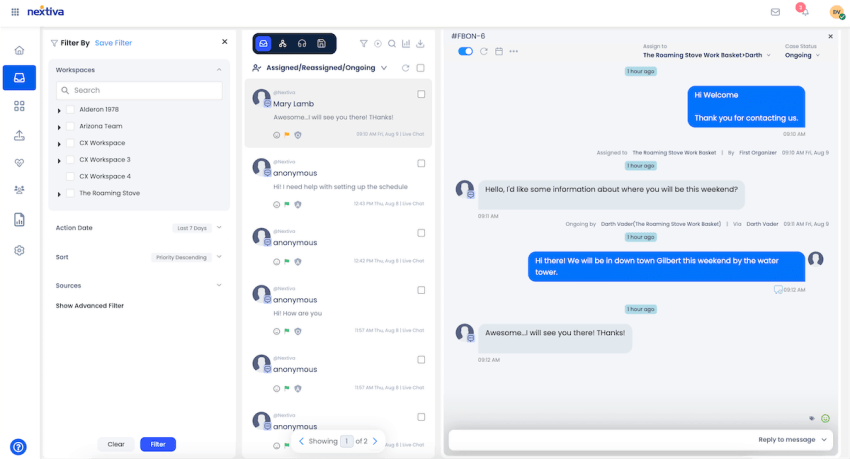
Resolving issues proactively
Monitoring sentiment in real time allows businesses to flag negative feedback early. By doing so, you can act quickly to resolve potential issues before they escalate. You may be able to salvage strained customer relationships and prevent other customers from running into the same issues, reducing churn.
For example, after James Villas started using sentiment tools to automatically flag urgent calls, they reduced their resolution times by 51%.
Driving business decisions
When used correctly, sentiment analysis can provide incredibly actionable insights that you can use to inform product development, marketing strategies, and customer service improvements. For example, if you consistently hear that your customers are struggling and at risk of churn due to a confusing onboarding experience, you may choose to implement customer success programs or include free guided onboarding in your process.

How Customer Sentiment Analysis Works
Customer sentiment analysis works through a structured process that transforms raw customer feedback into actionable insights by leveraging natural language processing (NLP), machine learning, and data analytics.
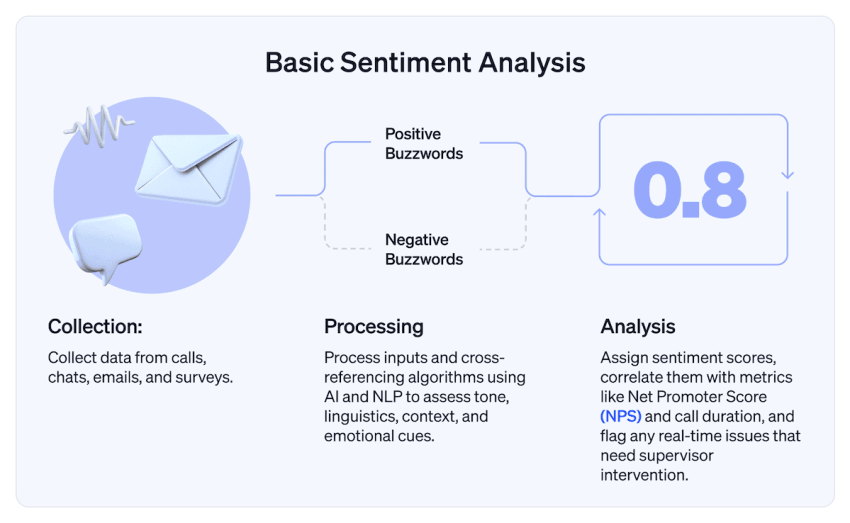
Here is how it typically works step-by-step:
1. Data collection
The process starts by gathering large volumes of customer feedback from multiple sources, such as:
- Social media posts
- Online customer reviews
- Surveys
- Support tickets and emails
- Chat transcripts and call recordings
Collecting data from diverse channels ensures a more complete view of customer sentiment across the entire customer journey.
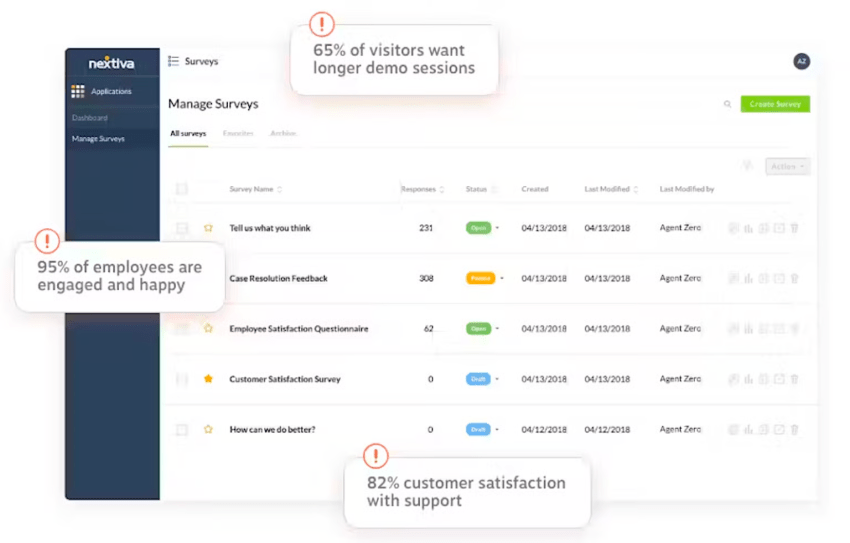
2. Data preprocessing and cleaning
The collected text or audio data is cleaned and prepared for analysis. This involves:
- Removing irrelevant information (stop words, punctuation, duplicates)
- Correcting spelling or grammar errors
- Converting audio to text (if needed)
- Segmenting feedback by topic or theme
This step ensures that the dataset is accurate, structured, and ready for effective analysis.
3. Sentiment identification and classification
Using NLP and machine learning, the system analyzes the language used to detect sentiment. It classifies feedback into categories like:
- Positive
- Neutral
- Negative
More advanced systems go beyond this, detecting emotion (e.g., anger, frustration, delight) or using polarity scales (e.g., very positive to very negative) to add nuance and depth.

4. Aspect-based sentiment analysis
Instead of analyzing sentiment as a whole, aspect-based analysis breaks feedback down into specific topics or features. For example, a review might be positive about pricing but negative about customer support. Each aspect is evaluated separately to pinpoint strengths and weaknesses in detail.
5. Scoring and quantification
To make sentiment easier to interpret, many systems assign numeric values (e.g., sentiment scores from 1 to 5 or -1 to +1). This quantifies emotion and helps teams prioritize which issues or themes require immediate attention.
6. Visualization and reporting
The results are presented through dashboards, charts, and reports that highlight:
- Sentiment trends over time
- Sentiment by channel, product, or feature
- Volume and severity of negative feedback
- Emerging topics or recurring issues
These visuals make it easier for teams to share insights and align around key actions.
7. Actionable insights and response
Finally, sentiment insights are put to work. Businesses use this customer data to:
- Proactively address negative feedback
- Improve product features or UX
- Train support agents more effectively
- Tailor marketing and messaging based on customer emotion
By understanding how customers feel, businesses can respond with empathy, optimize experiences, and strengthen customer relationships.
Benefits and Challenges of Sentiment Analysis
While customer sentiment analysis can be incredibly valuable, there are also challenges that business leaders need to account for. Let’s review both the benefits and common difficulties—along with tips for making the most of your sentiment analysis efforts.
Benefits of Sentiment Analysis
Deeper customer understanding
A good sentiment analysis tool helps businesses move beyond surface-level metrics to understand how customers really feel. This emotional insight allows you to address underlying concerns, improve brand perception, and build stronger relationships.
Proactive issue resolution
By identifying spikes in negative sentiment early—especially across social media or customer support channels—you can take action before problems escalate. This leads to faster resolution and a lower risk of churn.
Improved customer experience (CX)
Sentiment data helps pinpoint friction points in the customer journey, allowing you to optimize key touchpoints and deliver a more seamless experience. It can also highlight what’s working well, so you can double down on effective strategies.
Data-driven decision-making
With large-scale feedback analyzed and visualized, teams can make informed decisions on product updates, support training, messaging, and more. Sentiment trends can validate or challenge assumptions, helping you prioritize based on customer emotion, not guesswork.
Operational efficiency through automation
AI-powered sentiment tools save time and effort by analyzing massive volumes of unstructured data quickly. They can surface trends and patterns that would be difficult or impossible to spot manually, enabling faster, smarter responses.
Challenges of Sentiment Analysis
Understanding context
Human language is full of nuance; sarcasm, slang, and regional differences can easily confuse AI-powered sentiment tools. Even advanced systems can struggle to interpret meaning accurately.
To improve accuracy, use machine learning tools that adapt to language patterns over time. Still, a manual review by experienced analysts is often necessary to ensure a clear understanding of customer sentiment.
Handling large volumes of data
Feedback comes from many channels—social media, emails, support calls, and reviews—which can be overwhelming to analyze manually. AI helps by automating the process and identifying patterns in large datasets, surfacing insights that would otherwise be missed.
Classifying sentiment accurately
Feedback often includes mixed emotions, which can confuse classification systems.
For example, a customer might be upset their order arrived damaged but still praise the support team. This could result in a “neutral” label, even though it ends on a positive note. Manual oversight and high-quality tools can help interpret these gray areas more effectively.
Tracking in real time
Identifying and responding to sentiment shifts in real time requires robust analytics tools and internal processes. Delays can result in missed opportunities to resolve issues early, so real-time monitoring and clear escalation paths are key to staying responsive.
Companies who use real-time AI-powered sentiment analysis experience up to 40% faster escalation management, 25% higher customer retention, 30% cost reduction in operations, and 15-20% improvements in CSAT scores compared to those without such analysis.
How to Measure Customer Sentiment
Measuring customer sentiment involves more than just collecting feedback—it’s about interpreting tone, emotion, and intent across multiple channels.
Here’s how a business can go about it effectively.
1. Choose your data sources
Start by deciding where you’ll collect sentiment data from. Common sources include:
- Customer support interactions (chat, email, phone transcripts)
- Surveys (especially open-ended responses)
- Online reviews and app store ratings
- Social media posts and comments
- Community forums or third-party sites
Remember, gathering from multiple sources ensures that you get a well-rounded view of customer sentiment.
2. Use sentiment analysis tools
Next, use AI-powered sentiment analysis software that can process large volumes of unstructured data. (See below for five recommended tools.)
These tools typically use:
- Natural Language Processing (NLP) to analyze text
- Machine learning models to classify sentiment as positive, negative, or neutral
- Emotion detection for deeper insight (e.g., identifying anger, joy, or frustration)
Some platforms also offer aspect-based sentiment analysis, which breaks down sentiment by specific topics (e.g., price, delivery, support).
3. Assign sentiment scores
Most tools will assign a customer sentiment score to each piece of feedback:
- On a scale (e.g., -1 to +1 or 1 to 5)
- Or through tags (positive, neutral, negative)
This helps quantify emotion and makes it easier to track sentiment over time or by category.
4. Monitor in real time (if possible)
Real-time sentiment tracking allows businesses to respond quickly to sudden spikes in negative sentiment (e.g., after a product launch or service outage). Many customer experience platforms offer real-time dashboards to visualize trends as they happen.
5. Combine with other metrics
For a fuller picture, combine sentiment analysis with traditional metrics like:
This allows you to correlate emotional tone with measurable business outcomes like loyalty, retention, and support efficiency.
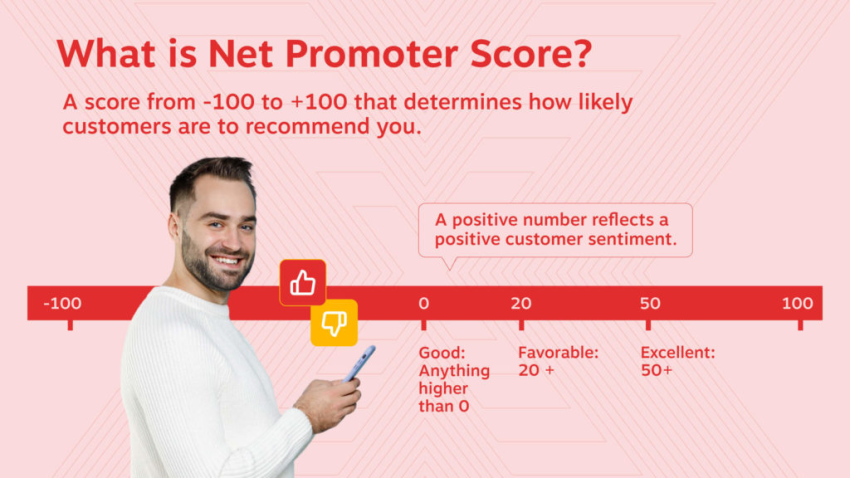
6. Review and interpret results
While automation does the heavy lifting, human review is still important, especially to catch sarcasm, nuance, or mixed sentiments that algorithms might misclassify.
7. Take action
The goal isn’t just to measure sentiment—it’s to act on it. So sentiment data should feed directly into action plans, such as:
- Improve product features or onboarding flows
- Retrain support teams where needed
- Adjust marketing language or brand messaging
- Follow up with unhappy customers
5 Examples of Customer Sentiment Analysis
Now that you know exactly what sentiment analysis is, why it’s used and how it works, let’s take a look at different examples of how it might be used.
🛍️ 1. E-commerce product feedback (mixed sentiment)
A customer writes in a review: “The dress is beautiful and fits perfectly, but the shipping took forever.”
- Sentiment Analysis Insight: The sentence contains both positive (product quality) and negative (delivery time) sentiment.
- Action: Tag this as “mixed” and route it to both the product and logistics teams—celebrate the fit, but investigate shipping delays.
📞 2. Customer support call (positive sentiment Override)
In a support transcript, a customer says:“I was really upset when I got the wrong item, but your agent was amazing and fixed it right away. Thank you!”
- Sentiment Analysis Insight: Despite initial frustration, the overall sentiment is positive due to excellent support recovery.
- Action: Highlight the agent’s performance and use it as a training example for de-escalation.
💬 3. Social media mention (negative sentiment spike)
A tweet reads: “Can’t believe @BrandName hasn’t fixed this bug in weeks. So frustrating. Ready to switch platforms.”
- Sentiment Analysis Insight: Clear negative sentiment with customer churn risk indicators.
- Action: Trigger real-time alert for social support to intervene publicly and offer a solution.
📊 4. Survey feedback (neutral sentiment with actionable insight)
From an NPS comment box: “The interface is fine, but there’s nothing that really wows me.”
- Sentiment Analysis Insight: Neutral sentiment—but with constructive feedback that the product lacks standout features.
- Action: Flag this for the product team as a prompt to explore ways to add delight or innovation.
🧾 5. Review platform analysis (aggregate trend)
Across 500 reviews on Trustpilot, 70% mention long wait times on the phone, using phrases like “on hold forever,” “slow response,” or “had to call twice.”
- Sentiment Analysis Insight: Pattern detection shows a trend of negative sentiment around customer service delays.
- Action: Use this data to justify staffing changes, implement AI chat solutions, or improve queue handling.
5 Best Tools for Sentiment Analysis
A customer sentiment analysis tool can help you detect patterns, identify potential concerns, and respond to customer needs proactively. You may be able to find dedicated sentiment analysis tools, but some are also included in call center analytics software.
Let’s review five of the best tools currently on the market.
| Solution | Core Features | Ideal For |
|---|---|---|
| Nextiva Contact Center | AI-driven sentiment analysis, real-time agent feedback, conversation analytics, CSAT/NPS tracking | Businesses focused on improving real-time customer interactions and sentiment tracking across omnichannel support |
| HubSpot Service Hub | Sentiment tracking for emails, tickets, live chats; Integrates with HubSpot tools | Small businesses seeking a cost-effective, integrated solution for customer satisfaction insights |
| IBM Watson Natural Language Understanding | Text analytics for structured/ unstructured/metadata, customizable for unique business language | Large-scale operations needing advanced sentiment analysis across diverse datasets |
| Sprout Social | Social media listening, real-time sentiment insights, visualization of keywords/phrases, detailed reports | Social media-centric support teams aiming to enhance engagement and analyze brand sentiment online |
| Lexalytics | Multilingual text analytics, customizable NLP rules, high-speed processing | Global brands requiring fast, scalable sentiment tracking across multiple languages and regions |
1. Nextiva Contact Center

Nextiva’s contact center solution integrates AI-driven sentiment analysis, tracking customer emotions during calls and providing real-time feedback to agents for improved customer interaction.
Nextiva also offers comprehensive reporting on sentiment trends to help businesses make data-driven decisions. You can track key metrics, like scores for CSAT, NPS, and customer sentiment, for clear, quantifiable data. Our software uses both AI and machine learning to analyze complex data sets, detect human emotion, and provide improved customer insights over time through our conversation analytics features.
2. HubSpot Service Hub

HubSpot’s Service Hub offers customer service software, and it may be a great tool for small businesses. The platform has automated sentiment tracking for emails, tickets, and live chat conversations. This can provide incredible insights into customer satisfaction and engagement levels, and the platform integrates seamlessly with HubSpot’s other suite of tools (which include marketing and sales hubs).
3. IBM Watson Natural Language Understanding
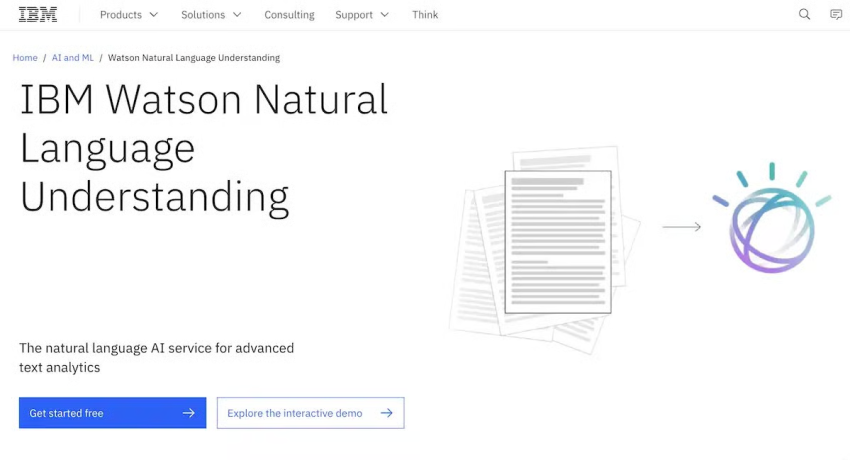
IBM Watson Natural Language Understanding can analyze text data to determine customer sentiment across a large volume of different interactions. It’s capable of collecting insights from structured data, unstructured data, and even metadata, allowing you to customize the platforms’ analytics to account for your business’s unique language.
While the software is incredibly advanced and provides an opportunity to leverage AI in customer experience tech, it’s best suited for large-scale and complex operations.
4. Sprout Social
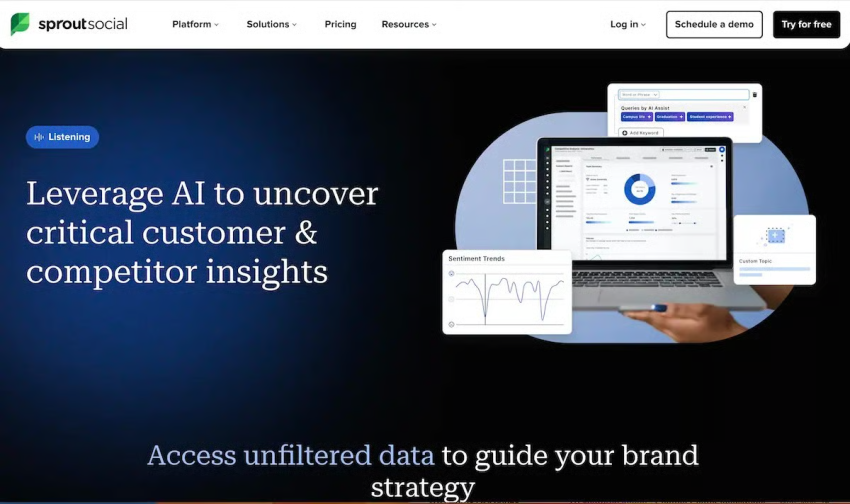
Sprout Social is focused heavily on social media sentiment and provides real-time insights into how customers feel about your brand and offers tools to engage with your customers directly. This social media listening software is incredibly powerful, offering visualization into the most frequently used words or phrases, tracking user sentiment across multiple social platforms, and providing detailed analysis reports.
However, the company only offers social listening software, so businesses looking for overall sentiment analysis that accounts for survey responses, call analytics, or even third-party content may want to look at other tools.
5. Lexalytics
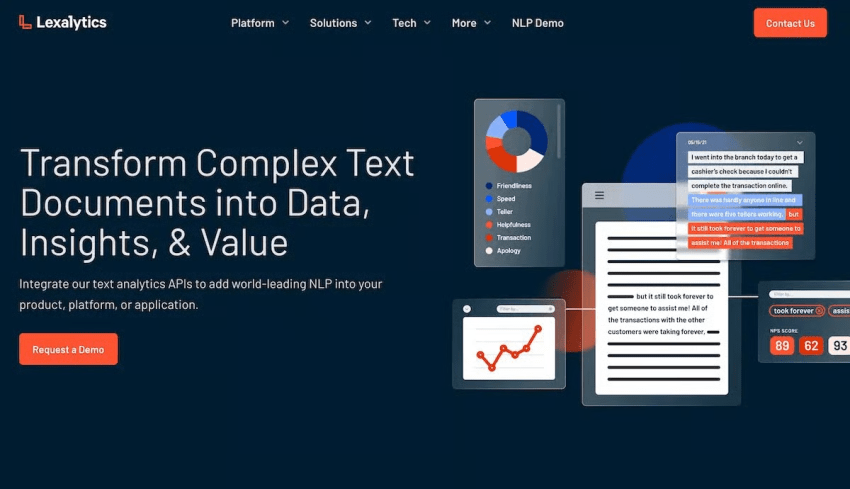
Lexalytics is a sophisticated NLP platform that delivers multilingual sentiment analysis, making it great for global brands that want to track customer sentiment across multiple languages and regions. The platform focuses exclusively on text analytics, and it’s fast—it can process up to 200 online posts per minute, for example, based on a pipeline model of customizable NPL rules. It is best suited for international brands that need to reach customers in multiple languages.
Start Measuring Customer Sentiment With Nextiva’s AI-Powered Platform
Sentiment analysis has so many valuable use cases in businesses today. It can improve operational efficiency, optimize the customer journey, shed light on blind spots, and automate repetitive tasks.
Nextiva’s AI-powered customer journey platform can help businesses improve their CX by understanding customers on a deeper level. You can also better identify potential concerns early, allowing you to be more proactive about CX issues across all channels before they become a bigger problem.
Discover how Nextiva can offer more insight into your customer journey today.
Deliver personalized CX at scale.
Predict your customers’ needs in real time with AI-powered service, and future-proof your business.
Customer Sentiment FAQs
Customer sentiment refers to how customers feel about your brand, product, or service. It captures the emotional tone behind feedback — whether it’s positive, negative, or neutral — and helps businesses understand attitudes, perceptions, and satisfaction levels.
Sentiment analysis in customer service uses AI and natural language processing (NLP) to analyze support interactions (like chats, emails, or calls) and determine how customers feel. This helps businesses identify unhappy customers, improve agent responses, and spot patterns that may need attention.
The three main types of sentiment analysis are:
Polarity-based analysis – Classifies sentiment as positive, neutral, or negative.
Emotion detection – Identifies specific emotions like anger, joy, frustration, or satisfaction.
Aspect-based analysis – Breaks feedback into specific features (e.g., delivery, support) to analyze sentiment on each individual aspect.
The primary purpose is to understand how customers feel about their experiences so businesses can take informed action — from improving products and support to preventing churn and boosting customer satisfaction and loyalty.
Customer sentiment is measured by analyzing feedback from sources like surveys, reviews, and support transcripts using sentiment analysis tools. These tools classify and score sentiment, often using NLP and machine learning, and present insights through dashboards or reports. Manual review can add accuracy, especially for nuanced or mixed feedback.

















 Customer Experience
Customer Experience 











